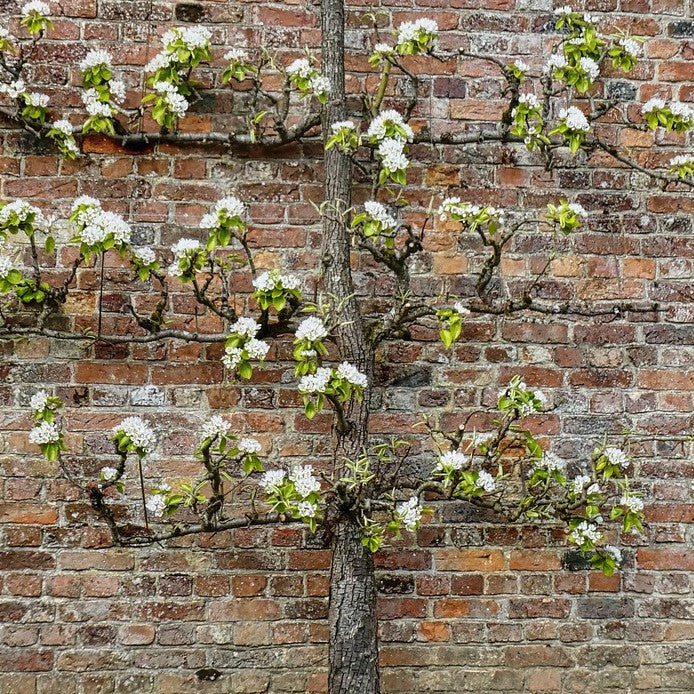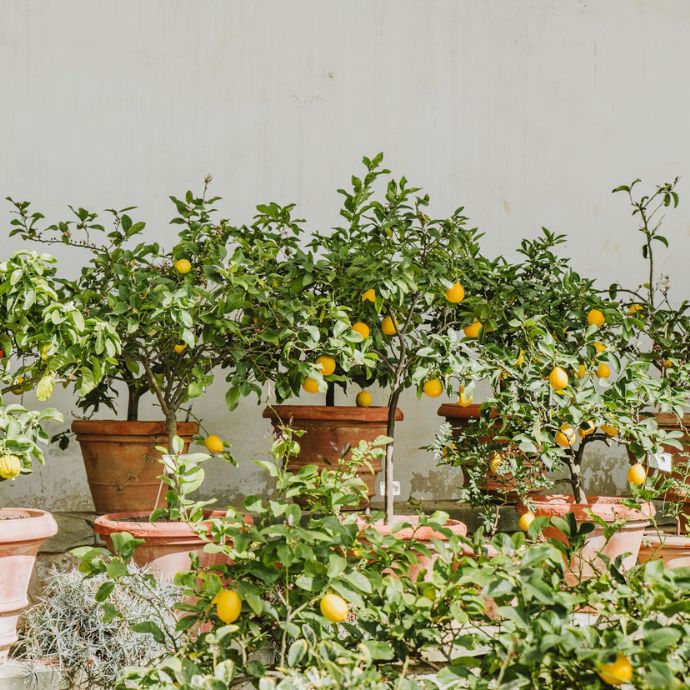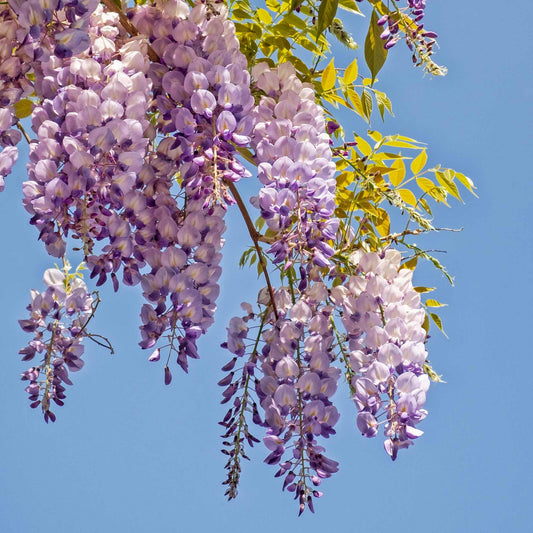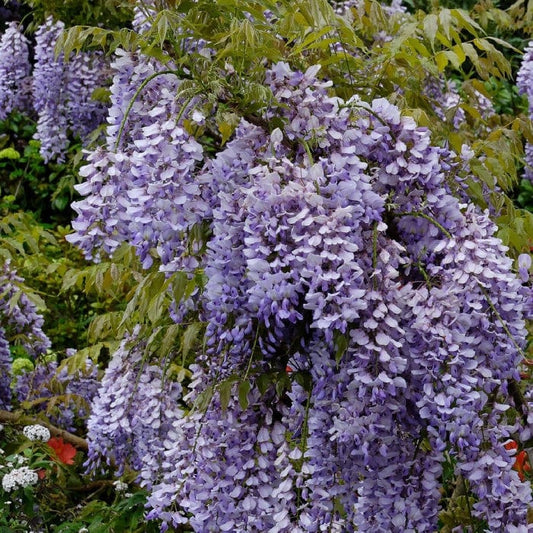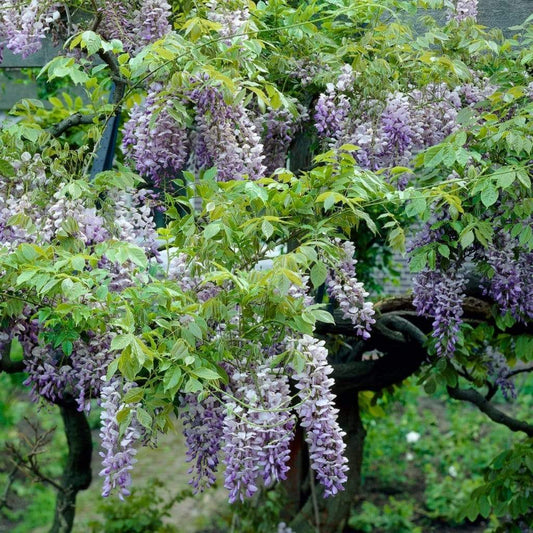How to Grow Wisteria: An Expert Guide

Wisteria is arguably the ultimate climbing plant. With its woody vines covered in bunches of warmly-fragranced, pendulous flowers, and lush green leaves providing a super backdrop, wisteria can easily transform a wall, pergola or front porch – you can even grow one as a ‘tree’! In this guide, we’ll be walking you through exactly how to grow a wisteria, from planting through to aftercare, and much, much more.
Jump to:
- What conditions do wisterias like?
- Which wisteria is right for you?
- When to plant wisteria
- How to plant your wisteria
- Caring for your wisteria
- Wisteria FAQs
What conditions do wisterias like?
Wisteria likes fertile, well-drained (but moist) soil, so if you’ve got particularly heavy or clay soil, then consider amending with some organic compost or horticultural grit. Wisterias like a position in full sun; you can grow your wisteria in partial shade (three to six hours of direct sunlight per day) though its blooms might not be so plentiful. In terms of support, make sure your chosen surface is strong and sturdy – a mature wisteria can become pretty heavy, so a stone wall or robust pergola would be our top choices.

Which wisteria is right for you?
There are several kinds of wisteria available to you to choose from, including Japanese wisteria (Wisteria floribunda), Chinese wisteria (Wisteria sinensis), American wisteria (Wisteria frutescens) and silky wisteria (Wisteria brachybotrys).
Japanese wisteria
Japanese wisterias are characterised by the length of their flower racemes, which are longer than any other wisteria, with some cultivars sporting flowers up to two metres in length. They also have the most leaflets of any wisteria, with each leaf possessing somewhere between 13 and 19 leaflets. Vigorous in growth, many Japanese wisterias will grow over nine metres tall if left unimpeded.
Chinese wisteria
Chinese wisterias have shorter flowers (generally between 10-20cm) and twine anticlockwise (rather than clockwise like Japanese wisterias). Their leaves also have fewer leaflets than Japanese wisterias, with each leaf usually boasting between 7 and 13 leaflets. Chinese wisterias generally grow the largest of all wisterias when fully mature, with older, long-established plants sometimes reaching up to 30m in height!
American wisteria
American wisterias yield the shortest flowers of any wisteria, with most racemes somewhere between 5-15cm in length. Like Chinese wisterias, they twine anticlockwise, however unlike the Asian species, the seed pods of American wisterias are smooth, as opposed to velvety. Their leaves generally have a similar number of leaflets to Chinese wisterias. American wisterias are the smallest, least vigorous of all the wisterias, typically growing to an eventual height of between four-and-a-half and nine metres tall.
Silky wisteria
Silky wisterias are truly glorious plants, and are most easily recognised by the downy leaves that give the plant a ‘silky’ appearance, hence its common name. The flower racemes are short and stubby, similar in length to the flowers of the American wisteria (the name brachybotrys) actually has Greek origins and means ‘short clusters’.
When should you plant your wisteria?
Wisterias are generally best planted between the months of October and April, though you can generally purchase and plant potted wisterias throughout the year. Planting them between autumn and spring, however, gives them the best foundations to really get going. We’d also recommend you avoid planting in the very heart of winter, as soil is more likely to become waterlogged or frozen during this period.

How to plant your wisteria
To plant your wisteria, dig a planting hole as deep as the pot it’s in/the rootball, and twice as wide. Place your wisteria into the planting hole, backfill with soil and then firm the plant in gently with your heel. Make sure to angle your plant towards its support slightly to make tying in easier. Once planted, give your plant a good watering to help it settle in.
Training wisteria
We’ve written a whole guide on training wisteria – as well as a piece on wisteria umbrellas(!) – so we won’t go into too much detail here, but rather give you some of the basics. If you’re training your plant against a wall or fence, you’ll need a couple of bits, like some galvanised wire and turnbuckle tensioners, to create your own wire frame against which you can train your wisteria in an espalier-like fashion.
A less intensive option is to train your pergola over a pergola or (sturdy – and we mean sturdy archway) by tying your plant in as it grows. We’d recommend using heavy-duty ties that can withstand the weight of the plant, but make sure they’re still made from a material that won’t damage or dig into the plant’s woody vines.

Caring for your wisteria
Once your wisteria is planted and growing nicely, you’ll need to make sure to look after it over the months and years to keep it in tip-top condition.
Watering
As it establishes in its first couple of years, water your wisteria regularly throughout the growing season, and especially in extended periods of hot, dry weather. Once established, your plant will still benefit from routine watering to prevent its soil from drying out.
It’s especially important to remember watering in the case of wall or fence-trained wisterias, as these surfaces can create a ‘rain shadow’ effect whereby the soil directly beneath the structure doesn’t get wet, even when it rains. This is also why it’s worth planting wall-trained wisterias roughly half a metre from the vertical surface.
Feeding
Each spring, provide your wisteria with an application of general-purpose, balanced fertiliser to give it a little boost for the upcoming flowering season. If you’re growing your wisteria in a large container – which you can do with less vigorous varieties – then a liquid tomato feed throughout the growing season works perfectly.
Pruning
Many people are put off purchasing wisterias for fear that its pruning will be too involved and complicated. The reality, however, is that once you know what you’re doing, it’s actually pretty easy. And luckily for you, we’ve written a comprehensive article on how to prune wisteria, but in short, here’s what you need to know.
Wisterias typically need pruning twice every year, once in summer and then again in winter. Summer pruning involves cutting back ‘whippy’ growth, while pruning later in the year requires you cut back the growth you targeted in the summer even further. Like we said, you can find everything you need to in our specialist article, so make sure to check it out.

Other frequently asked questions regarding growing wisteria
That covers the main thrust of how to grow a wisteria, but there are still a few questions people tend to have when considering these luscious climbers.
Can you grow wisteria in a container?
The short answer, yes! The longer answer, yes but it depends on a couple of factors. You’ll want to opt for a naturally smaller species and variety (like American wisteria) and make sure your container is nice and large so that the plant’s root system has the room to properly develop. Container-grown wisterias will require more regular watering than those grown in the open ground, and may need repotting every few years just to give the roots a bit of a trim if they’ve become potbound, and to refresh the compost.
When do wisterias flower?
It varies depending on the type of wisteria you have; Chinese wisterias generally bloom earliest, and often flower before the emergence of the plant’s leaves. They’re followed by silky and Japanese wisterias, with American wisterias blooming latest, typically in June or July.
Why isn’t my wisteria flowering?
The most likely cause is that it’s not old enough – wisterias can take a few years before they start to flower in earnest, so if you’ve only had yours a year or two, just be patient and they’ll probably come in future years.
Another reason is that it’s not getting enough sun. If your wisteria is planted in deep shade, the chances are it won’t produce many (if any) flowers. Likewise, if your plant sits in poorly-draining or waterlogged soil, then it’s very unlikely that it will produce many blooms.
The other reason is that it’s being overfed; whilst an application of fertiliser annually can be beneficial, if you feed your plant too much it might start producing foliage at the expense of those lovely blooms we all know and want.
Do wisterias suffer from any pests or diseases?
Though generally healthy plants, wisterias can be affected by a couple of pests and diseases. If you notice dark brown blotches on the leaves with a yellow margin, then it might be a result of powdery mildew. Prune out affected shoots and destroy infected leaves when they fall in autumn.
Scale insects are another thing to watch out for; these sap-sucking plants excrete a sticky, sugary substance called honeydew, which in turn can lead to sooty mould. If you notice any small, shell-like bumps on the plant’s foliage, remove them by hand and encourage predators like ladybirds and parasitic wasps.

Final thoughts
So, there you have it! Our complete expert guide to growing one of the greatest plants known to horticultural kind. These chocolate-box climbers are worthy of a spot in any suitable garden, and now with this knowledge, you have all you need to keep your wisteria plant happy and healthy for years and years to come.
Last updated: 23/06/2025



